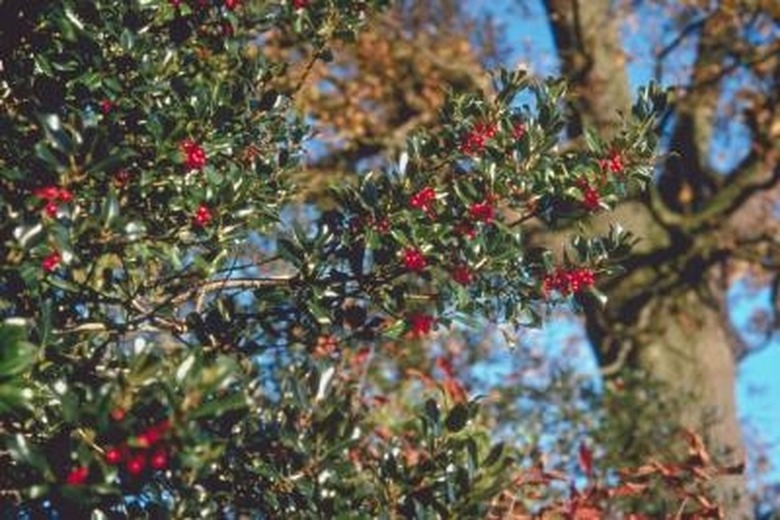The Root System Of Holly Bushes
The holly bush is a broad-leaf evergreen popular in landscape design for its versatility. It serves well as a low-cropped foundation planting, as a privacy screen, as a hedge or as a specimen tree for a focal point in the garden. When a holly grows too large, however, you may need to move it. Understanding the holly's root system helps ensure a successful move and adaptation to another area in the landscape.
Flower and Fruit
Flower and Fruit
Holly trees flower in the spring between April and June. The plants are dioecious, meaning that although their small white flowers appear similar, one type of flower is male (stamenate) and the other is female (pistillate). The female blossoms are pollinated by insects, and only the females produce the fruit or berries. Both male and female plants must be present in the landscape to produce the red and orange berries. Allow small holly trees to flower before transplanting so the sex of the plants is identified.
Root System
Root System
Because young hollies have both a taproot and a prolific lateral root system, they transplant easily. The taproot is a thick stalk of root that extends straight down beneath the plant to stabilize it and draw supplemental water and nutrients from deeper soil. The lateral roots extend out horizontally from the taproot of the plant, and lie closer to the surface. They are thinner and more fragile than the taproot; however, they provide the main source of the plant's water and nutrients.
Transplanting
Transplanting
Transplant hollies during the dormant season, between November and March. Small holly trees may be transplanted with bare roots, but the roots must be kept moist during the transplanting process. Keep the roots of larger plants intact in a ball of soil, and covered with burlap to retain moisture and provide protection. Pruning the lateral roots of small holly trees to a depth of 2 to 4 feet in the year prior to transplanting encourages healthy new growth of these roots to sustain the plant in its new location.
Propagation
Propagation
Raising holly plants from seed is a lengthy process, taking up to three years for seeds to germinate naturally. Vegetative reproduction is an alternative. Holly is reproduced from cuttings taken in August, September or December. Take cuttings from the current season's ripened wood, with a small section of two-year-old wood, including leaves. Set these cuttings at a slant in 6 inches of moist peatmoss and soil, with the leaves lying flat on the soil surface, until they sprout and develop roots. When they develop roots, transplant them. Root cuttings are not successful for propagation.
